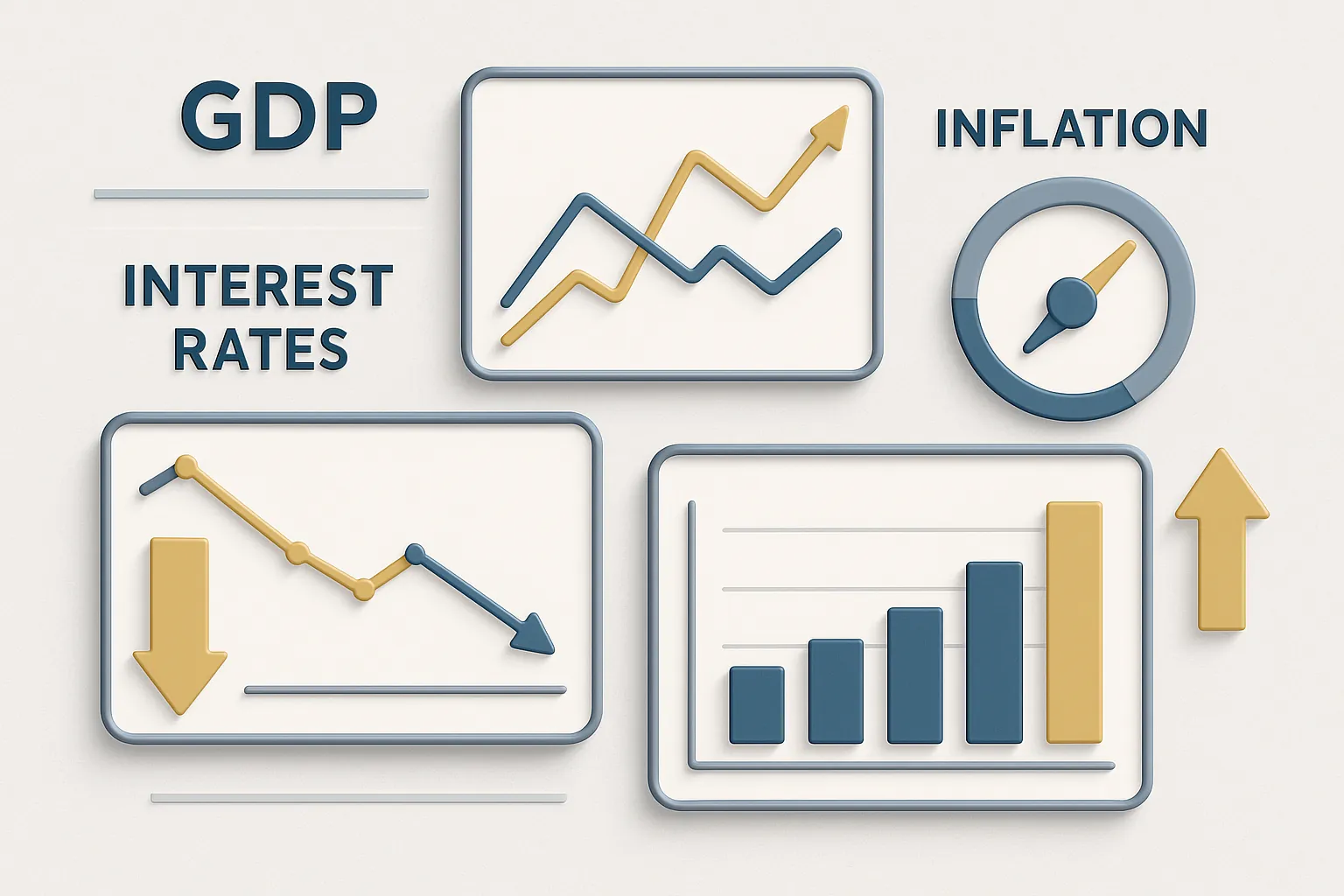
Golden Timing: How to Know the Exact Moment to Buy Shares
When Should You Buy Shares?
Golden Timing: How to Know the Exact Moment to Buy Shares
Buying the right stock at the wrong time can cost you profits—or worse, lead to losses. This guide blends economic signals, technical analysis, investor psychology, and expert insights to help you identify the optimal moment to enter the market.
Click to View Quick Summary
Summary: Successful investing isn’t about guessing tops and bottoms—it’s about stacking probabilities in your favor. This guide will show you how to read macroeconomic indicators, apply proven technical tools, avoid emotional mistakes, and learn from the strategies of professional traders. By the end, you’ll have a clear framework for timing your share purchases with confidence.
“In investing, what is comfortable is rarely profitable.” — Robert Arnott
If you’re new to the markets, it’s worth reviewing Fundamentals of Stock Market Investing:contentReference[oaicite:0]{index=0} before diving in, so you understand the core principles that this timing strategy builds on.
Let’s begin by understanding why timing is such a powerful lever in your investing success—and why even the best stocks can deliver disappointing results if bought at the wrong moment.
Why Timing Is Everything in the Stock Market
Big idea: You can pick a great company and still lose money if you buy at the wrong time. The goal here is to turn “lucky guesses” into a repeatable, data-backed process.
Quick context: Over a full cycle, stocks trend upward—but entries near peaks can lock you into months of drawdown. Strategic timing narrows risk and amplifies your upside by aligning valuation, momentum, and macro cues.
What “Timing” Actually Means (Beyond Guesswork)
Timing is not fortune-telling—it’s stacking probabilities in your favor. Think of it as a checklist: Are fundamentals supportive? Is momentum turning? Are macro winds shifting? When these line up, your odds of buying before a meaningful advance improve dramatically.
Start with first principles: understanding how price reflects ownership and value. This primer on the real value of a stock:contentReference[oaicite:0]{index=0} and the basics of what a stock actually is:contentReference[oaicite:1]{index=1} keeps your analysis grounded. For a structured foundation, see Fundamentals of Stock Market Investing:contentReference[oaicite:2]{index=2}.
“The market rewards patience, but it punishes hesitation.” — Timeless trading wisdom
Right Company, Wrong Time vs. Right Company, Better Time
Buying great businesses near euphoric peaks can lead to painful drawdowns, even if the long-term story is intact. Conversely, entering after sentiment washouts—when valuation compresses and momentum stabilizes—can transform the same company into a high-reward, lower-risk setup. This is why seasoned traders combine macro cues with technical confirmation (we’ll detail both in later blocks).
Pros ✔✔
- Improved risk/reward when valuation, macro, and momentum align.
- Reduced drawdown time versus buying into overextended moves.
- Higher conviction due to multi-signal confirmation.
Cons ✘✘
- Never perfect: signals can conflict or arrive late.
- Patience required: waiting for alignment can feel like “missing out.”
- Discipline heavy: rules must override emotion in real time.
For a taste of how timing magnifies outcomes, browse these real swing trading success stories:contentReference[oaicite:3]{index=3}, then compare entries taken after pullbacks vs. entries chased at highs. You’ll notice a pattern: patience + confirmation beats impulse.
Key Highlights
- Timing = probability stacking, not prediction.
- Blend fundamentals (value & quality), technicals (trend & momentum), and macro (rates & growth).
- Patience and rules help you avoid emotional traps like FOMO.
Up next, we’ll decode the economic signals that routinely precede powerful advances—and how to read them without second-guessing yourself. If you’re brand-new and want an easy on-ramp first, this accessible Stock Market for Dummies overview:contentReference[oaicite:4]{index=4} will help you keep the big picture in view while we sharpen your entries.
The Economic Signals That Trigger the Best Buy Opportunities
Great investors don’t just watch stock charts—they track the *heartbeat of the economy*. Knowing when macro conditions align in your favor can turn good trades into exceptional ones.
Key idea: Economic data doesn’t tell you what stock to buy—it tells you when the wind is at your back. Combining macro signals with company fundamentals is like having both a map and a compass.
Top Macro Indicators for Spotting Entry Points
- Interest Rate Cuts: Often boost borrowing, spending, and equity valuations.
- GDP Growth Slowdown: Can set the stage for stimulus, which markets tend to front-run.
- Unemployment Data: Counterintuitively, rising unemployment can precede market rebounds if rate cuts follow.
- Inflation Trends: Moderating inflation can reduce pressure on central banks, improving stock sentiment.
For a concrete example, see how bank stocks responded in Bank Stocks Surge Fed Rate Cut 2025:contentReference[oaicite:0]{index=0}. It’s a real-world case where reading macro shifts paid off quickly.
“In the short run, the market is a voting machine, but in the long run, it is a weighing machine.” — Benjamin Graham

Pros ✔✔
- Anticipates trends before they hit earnings reports.
- Helps identify broad market turning points.
- Supports higher conviction in entries.
Cons ✘✘
- Lagging indicators can cause late entries.
- Requires ongoing monitoring of multiple data points.
- Can be influenced by political or one-off events.
Key Highlights
- Macro signals often lead market moves, not follow them.
- Interest rates, GDP, and inflation create the backdrop for rallies.
- Use them as context, not as standalone buy triggers.
Now that you know the economic backdrop to watch, the next step is to master the technical analysis tools that pinpoint your actual buy entry. We’ll explore them next.
Technical Analysis Tools That Pinpoint the Exact Entry
Fundamentals tell you what to own. Technicals tell you when to strike. Use these tools to convert good ideas into high‑probability entries.
Game plan: Start with trend (moving averages), confirm with momentum (RSI/MACD), then control risk (support/resistance & ATR). You’re stacking probabilities, not predicting the future.
For indicator selection and set‑ups that fit active traders, see Best Indicator for Swing Trading:contentReference[oaicite:0]{index=0}, then pair it with the frameworks in Swing Trading Methods:contentReference[oaicite:1]{index=1}.
1) Moving Averages (Trend & Trigger)
- 20/50 EMA to gauge short‑/intermediate trend. A rising 50 EMA = tailwind.
- Buy trigger: Pullback to rising 20–50 EMA with a strong bounce candle.
- Invalidation: Close below the 50 EMA after entry (tight risk control).
2) RSI (Momentum & Exhaustion)
- RSI 40–50 acting as support in uptrends often marks buyable dips.
- Bullish shift: RSI regime moving from sub‑50 to sustained 50–70.
- Warning: RSI > 70 is strong momentum, but can precede short‑term digestion.
3) MACD (Confirming Turns)
- Signal line cross above zero line confirms a stronger trend change.
- Divergence: Price makes a lower low while MACD makes a higher low → early shift.
4) Bollinger Bands (Volatility Context)
- Buy the squeeze break: BB width compression followed by expansion with volume.
- Mean reversion: Tag of lower band in an uptrend + reversal candle near 20‑SMA.
5) Price Structure (Support/Resistance) + ATR Risk
- Enter on higher low + reclaim of a prior pivot; place stop just below structure.
- Use ATR to size positions so normal volatility doesn’t shake you out.
| Tool | Primary Signal | Buy Cue | Risk Anchor |
|---|---|---|---|
| 20/50 EMA | Rising slope, price above | Reclaim of 20–50 EMA on volume | Stop under 50 EMA / swing low |
| RSI (14) | Regime 50–70 | Bounce 40–50 in uptrend | Stop under bounce candle low |
| MACD | Cross above zero | Bullish cross + rising histogram | Stop under structure |
| Bollinger Bands | Squeeze (low width) | Breakout with expansion & volume | Stop inside bands / 20‑SMA |
Pros ✔✔
- Objective rules reduce emotion and FOMO.
- Works across timeframes and sectors.
- Risk first: clear invalidation points and sizing via ATR.
Cons ✘✘
- Indicators can lag fast moves.
- Whipsaws in choppy, news‑driven markets.
- Requires consistent discipline to follow signals.
“Price is the final arbiter. Indicators guide you—price confirms you.” — Trader’s maxim
Key Highlights
- Trend → Momentum → Risk is a reliable sequencing for entries.
- Wait for confluence (EMA reclaim + RSI regime + MACD confirm).
- Define invalidation (structure/ATR) before you click buy.
You’ve got the tools—now let’s see them in the wild. Next, we’ll break down real‑life examples of well‑timed entries and what made them work.
Real-Life Examples of Perfect Share Purchases
Nothing drives a lesson home like seeing it unfold in the real world. These examples prove that combining macro signals and technical triggers leads to exceptional entry points.
Why it matters: Observing past wins helps sharpen your instincts and build a personal “playbook” of setups that work under specific market conditions.
Case Study #1 – Nvidia Before the AI Boom
In late 2022, Nvidia ($NVDA) was beaten down from its highs due to broader tech weakness. But savvy investors noticed:
- Macro: Interest rate hikes were slowing.
- Technical: 50 EMA was flattening; RSI reclaimed 50.
- Sector Tailwind: Growing AI investment chatter.
Those who bought near $150 and held through 2023 enjoyed a **multi-fold gain** as AI hype and earnings momentum took off.
Case Study #2 – Tesla After the 2019 Dip
Tesla’s ($TSLA) early 2019 slump had many writing the company off. But the smart money noticed:
- Macro: EV subsidies expanding in Europe/China.
- Technical: Higher low on weekly chart; MACD bullish cross.
- Fundamental Catalyst: Model 3 production ramping successfully.
Buying near $40 (split-adjusted) yielded staggering returns as Tesla rallied over the next two years.
For more investor success blueprints, see Swing Trading Success Stories:contentReference[oaicite:0]{index=0}, where traders share exact setups, triggers, and exits.
“Opportunities come infrequently. When it rains gold, put out the bucket, not the thimble.” — Warren Buffett

Pros ✔✔
- Proves strategies work in the real market.
- Builds confidence in following your process.
- Reveals how macro + technical + catalysts align.
Cons ✘✘
- Past performance doesn’t guarantee future results.
- Some catalysts are one-off events.
- Requires patience to wait for similar setups again.
Key Highlights
- Patience + confirmation consistently beat guesswork.
- Entry points are clearest when macro, technicals, and catalysts agree.
- Study past examples to recognize repeating patterns.
Seeing these successes is inspiring, but avoiding the pitfalls is just as important. Next, we’ll explore the psychological traps that can sabotage even perfect setups.
Investor Psychology and Avoiding Emotional Traps
The hardest part of buying shares isn’t reading charts or analyzing earnings—it’s mastering your own mindset. Emotional mistakes often turn great trades into losing ones.
Key point: Fear and greed are powerful forces. Recognizing their influence—and building systems to counter them—is the foundation of consistent investing success.
The Big Three Emotional Traps
- FOMO (Fear of Missing Out): Chasing after prices have already surged, often right before pullbacks.
- Panic Selling: Dumping stocks during normal volatility because of scary headlines.
- Confirmation Bias: Seeking only information that agrees with your existing belief about a stock.
Learn how to separate fact from fear with How to Identify Bad Stock News:contentReference[oaicite:0]{index=0}, so you don’t get shaken out of otherwise solid positions.
Case Study – Selling Too Soon
In early 2020, an investor bought a tech stock at $30, planning to hold long term. But after a quick rise to $36, they sold in fear of losing profits. Over the next year, the stock hit $90. This classic example shows how short-term thinking can sabotage long-term gains.
“The market is a device for transferring money from the impatient to the patient.” — Warren Buffett
Pros ✔✔
- Improves decision-making under pressure.
- Builds the discipline to follow your plan.
- Reduces the risk of emotional, costly trades.
Cons ✘✘
- Requires time and effort to develop self-awareness.
- Even experienced investors can slip during high volatility.
- No “one size fits all” approach—must personalize your strategy.
Key Highlights
- Awareness of emotional traps is the first step to avoiding them.
- Have a plan and stick to it—especially during volatility.
- Remove impulsive decisions by setting rules before entering trades.
Now that you understand the psychological hurdles, let’s see how experts and seasoned investors decide when to buy—and what separates their timing from the average trader.
Expert Opinions: When Professionals Pull the Trigger
While most retail traders rely on instinct or social media tips, professional investors operate on data, discipline, and deep market understanding. Here’s how they decide the exact moment to buy shares.
Insider insight: Experts rarely “guess.” They have predefined entry frameworks built on backtested rules, market cycles, and capital allocation models.
For examples of actionable alerts used by active traders, explore Day Trading Alerts:contentReference[oaicite:0]{index=0}, which shows how professionals communicate and act on trade signals in real time.
“I don’t try to predict the market—I react to it with rules that protect my capital first.” — Linda Bradford Raschke, veteran trader
“The best trades are obvious only in hindsight, which is why you need conviction in your process before you enter.” — Paul Tudor Jones
Common Entry Triggers Used by Experts
- Earnings Surprises: Buying after a company beats estimates and raises guidance.
- Sector Rotation: Entering early when money flows shift into undervalued sectors.
- Breakout from Accumulation: Price clearing a multi-week base with volume.
- Macro Catalyst: Central bank policy shifts or fiscal stimulus announcements.

Pros ✔✔
- Data-driven, rule-based decisions reduce emotional bias.
- Often backed by decades of market experience.
- Access to deeper research and institutional tools.
Cons ✘✘
- Professional strategies can be complex for beginners.
- Access to real-time institutional data may be costly.
- Even experts face losing trades; there are no guarantees.
Key Highlights
- Experts act on predefined, backtested setups—not gut feelings.
- Many rely on catalysts like earnings, sector flows, or macro shifts.
- Process and discipline matter more than perfect predictions.
You’ve learned how the pros do it—now let’s bring it all together with the key takeaways, answers to common questions, and your next steps for perfecting buy timing.
Key Takeaways, FAQs & Final Thoughts
We’ve explored timing from every angle—macro signals, technical triggers, investor psychology, and expert insights. Now let’s consolidate what you’ve learned and answer the most common questions about buying shares at the right moment.
Quick recap: Timing isn’t about predicting the exact top or bottom—it’s about stacking probabilities in your favor by aligning economic conditions, technical patterns, and disciplined execution.
Key Highlights
- Economic indicators set the backdrop for favorable conditions.
- Technical analysis provides precise entry signals.
- Managing your emotions is just as important as reading the market.
- Professional investors rely on process over predictions.
- Past case studies prove the power of patience and confluence.
Frequently Asked Questions
1. What month is the best to buy shares?
Historically, periods of market weakness—such as late summer or post-December tax-selling—have provided buying opportunities. But the best timing comes from market conditions, not the calendar.
2. Should beginners try to time the market?
Beginners should focus on building a watchlist, learning technical setups, and avoiding emotional trades. Dollar-cost averaging can be a safe fallback while honing timing skills.
3. Which is better: lump sum investing or dollar-cost averaging?
Lump sum investing historically outperforms when the market is in an uptrend. Dollar-cost averaging is better for volatile or uncertain conditions because it reduces entry risk over time.
If you’re just starting out, our guide on Fundamentals of Stock Market Investing:contentReference[oaicite:0]{index=0} will help you build a strong foundation.
Pros of Perfect Timing ✔✔
- Maximizes profit potential by entering at optimal points.
- Minimizes drawdowns and stress.
- Boosts portfolio confidence and discipline.
Cons of Chasing Timing ✘✘
- Difficult to execute consistently.
- May miss long-term growth by waiting too long.
- Requires strong discipline and ongoing analysis.
“You don’t have to be right all the time—you just have to be right at the right time.” — Anonymous trader
Perfect timing isn’t magic—it’s a skill you can build. By blending economic awareness, technical tools, psychological discipline, and lessons from the pros, you put yourself in the best position to capture meaningful gains without reckless risk.
Let’s begin by exploring why timing your share purchases is such a critical factor in investment performance—and why even the best stocks can disappoint if bought at the wrong time.